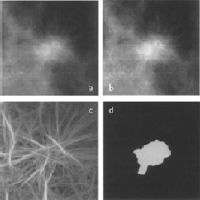Magnetic resonance imaging (MRI) can definitively diagnose around 90 percent of all breast cancers, compared to only 37.5 percent detection rate for the combined methods of mammography and ultrasound. This is the key finding of a study reported in the Journal of Clinical Oncology.
The study was conducted at the University Department of Radiology and Nuclear Medicine at the MedUni Vienna, in cooperation with the University Department of Gynaecology and Obstetrics and the Clinical Institute of Pathology. In 559 women at increased risk of breast cancer, a total of 1,365 screening examinations were carried out.
According to the results, 90 percent of all breast cancers could be clearly detected by MRI. The combination of MRI and mammography increased the detection rate by just five percent. None of the cancers were detected by ultrasound alone. The results were similar for non-invasive cancers and for benign breast lesions, the researchers noted.
"In cases where there is even the slightest doubt, and especially in women at increased risk, the obvious choice is MRI. Our study clearly shows the superiority of magnetic resonance imaging over mammography and breast ultrasound examinations," said Thomas Helbich, who led the study with Christopher Riedl. "The superiority of MRI is also completely independent of the patient's age, gene mutation status and breast density."
An MRI exam once a year is therefore "the only alternative" for high-risk patients who have a strong family history of breast cancer to the surgical removal of the breast and ovaries, Helbich said. "This is by no means 'over-diagnosis', but rather a necessity. Around 13,000 women in Austria are still at increased risk of breast cancer," he added.
The study's findings should encourage the increased use of MRI for breast screening too. As Helbich pointed out: "In light of these results, it is our duty to make women more aware of the fact that the use of mammography and ultrasound cannot detect all types of cancer. MRI really is the method to be recommended."
Currently Austria has 15 MRI scanners per million inhabitants, higher than the EU average of 10 scanners per million inhabitants. Notably, if MRI is to be used more frequently, Italian or Greek ratios would be better: in these countries, there are 24 and 23 MRI scanners per million inhabitants, respectively.
An online tool has been developed at the MedUni Vienna for the early detection of breast cancer risk. This can be accessed via this link: http://www.brustgenberatung.at
Source: Medical University of Vienna
Image Credit: Medical University of Vienna
The study was conducted at the University Department of Radiology and Nuclear Medicine at the MedUni Vienna, in cooperation with the University Department of Gynaecology and Obstetrics and the Clinical Institute of Pathology. In 559 women at increased risk of breast cancer, a total of 1,365 screening examinations were carried out.
According to the results, 90 percent of all breast cancers could be clearly detected by MRI. The combination of MRI and mammography increased the detection rate by just five percent. None of the cancers were detected by ultrasound alone. The results were similar for non-invasive cancers and for benign breast lesions, the researchers noted.
"In cases where there is even the slightest doubt, and especially in women at increased risk, the obvious choice is MRI. Our study clearly shows the superiority of magnetic resonance imaging over mammography and breast ultrasound examinations," said Thomas Helbich, who led the study with Christopher Riedl. "The superiority of MRI is also completely independent of the patient's age, gene mutation status and breast density."
An MRI exam once a year is therefore "the only alternative" for high-risk patients who have a strong family history of breast cancer to the surgical removal of the breast and ovaries, Helbich said. "This is by no means 'over-diagnosis', but rather a necessity. Around 13,000 women in Austria are still at increased risk of breast cancer," he added.
The study's findings should encourage the increased use of MRI for breast screening too. As Helbich pointed out: "In light of these results, it is our duty to make women more aware of the fact that the use of mammography and ultrasound cannot detect all types of cancer. MRI really is the method to be recommended."
Currently Austria has 15 MRI scanners per million inhabitants, higher than the EU average of 10 scanners per million inhabitants. Notably, if MRI is to be used more frequently, Italian or Greek ratios would be better: in these countries, there are 24 and 23 MRI scanners per million inhabitants, respectively.
An online tool has been developed at the MedUni Vienna for the early detection of breast cancer risk. This can be accessed via this link: http://www.brustgenberatung.at
Source: Medical University of Vienna
Image Credit: Medical University of Vienna
References:
Helbich TH, Riedl CC, Luft N et al. (2015) Triple-Modality Screening Trial for Familial Breast Cancer Underlines the Importance of Magnetic Resonance Imaging and Questions the Role of Mammography and Ultrasound Regardless of Patient Mutation Status, Age, and Breast Density. Journal
of Clinical Oncology, 2015; 33 (10): 1128 DOI: 10.1200/JCO.2014.56.8626
Latest Articles
MRI, Mammography, breast cancer, Breast density, breast ultrasound
Magnetic resonance imaging (MRI) can definitively diagnose around 90 percent of all breast cancers, compared to only 37.5 percent detection rate for the co...



























